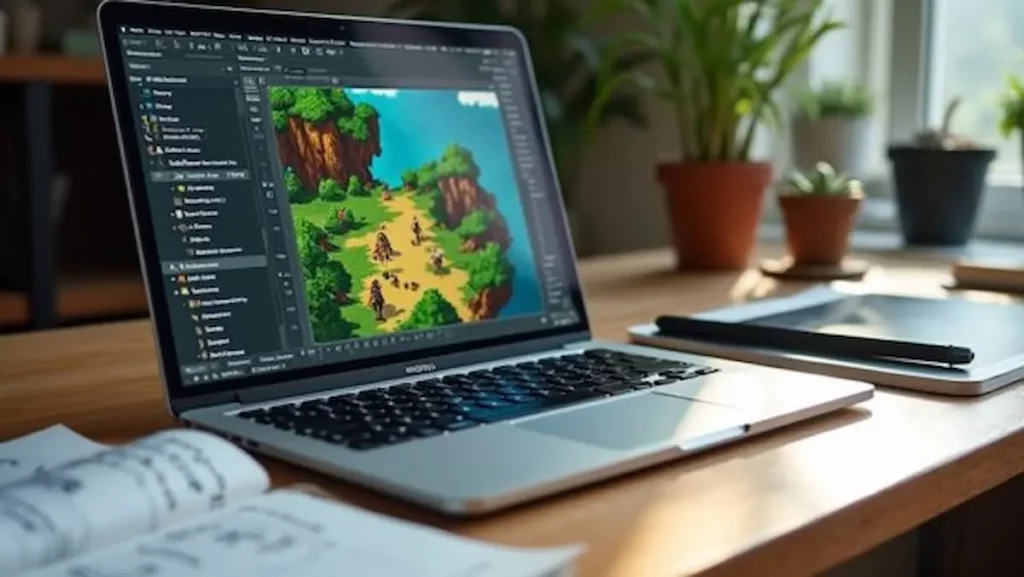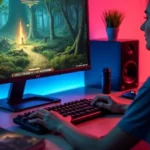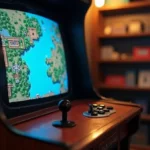
How long does it take to Beat Baldur’s Gate 3
The time to beat Baldur's Gate 3 varies greatly, depending on your choices and playstyle—discover what influences the journey ahead.


Creating an RPG in Game Maker starts long before you open the editor. To create an RPG in Game Maker that stands out, plan your world, characters, and systems with player experience in mind. Balance exploration, combat, and narrative so sessions feel rewarding, and make sure quest design, progression, and inventory management work together smoothly. When you create an RPG in Game Maker, define core loops early, map out content flow, and document features, these foundational steps make complex implementations easier and keep development on track.

Where does one begin when creating an RPG in Game Maker? Start by planning your RPG concept with solid worldbuilding that brings your game world to life.
Define clear narrative themes to shape your story, quests, and character arcs. This early planning of your RPG concept ensures a coherent, engaging experience for players before you jump into coding or asset design.
Setting up your Game Maker project for an RPG starts with a clear plan. First, create a new project, choose the game resolution, and organize folders for assets like sprites, sounds, and scripts.
Next, configure global variables and set up basic room layouts to control scenes and player flow.
With a well-organized Game Maker project, you’ll build faster, avoid errors, and keep your RPG development smooth from prototype to launch.
Revisit your Game Maker project structure regularly to maintain performance and scalability as your game grows.
When creating an RPG in GameMaker, defining characters and player stats is essential for smooth gameplay and long-term engagement.
Start by building simple yet meaningful character backgrounds to add personality and context. Then, assign clear player stats like health, strength, and agility to shape abilities and growth.
Balanced player stats help ensure fair progression, better interactivity, and a more rewarding experience for every player exploring your GameMaker RPG.
In GameMaker, creating maps and exploration mechanics is key to building engaging RPGs. You can design detailed maps that guide players through environments full of environmental storytelling.
Adding interactive objects, hidden paths, and secrets boosts player engagement and exploration. By combining smart level design with exploration mechanics, GameMaker helps you create dynamic worlds that reward curiosity and deepen the RPG experience.
Implementing quest and dialogue systems is essential for building a meaningful RPG experience. These tools turn simple exploration into engaging storytelling by guiding players with clear goals and choices.
With quest triggers, you can start tasks based on character motivations or world events, making each mission feel purposeful. Dialogue branching lets players shape the story, supporting non-linear paths and multiple outcomes. Managing narrative pacing keeps players engaged from start to finish.
When you integrate quest and dialogue systems effectively in GameMaker, you create a dynamic world that reacts to player decisions. For developers making games, focusing on quest and dialogue systems can elevate gameplay, deepen immersion, and strengthen your game’s narrative design.
Developing combat mechanics and enemy AI is essential for any engaging RPG. To make battles feel rewarding, focus on responsive controls, readable feedback, and a balanced damage system that scales with player progression.
For more depth, vary enemy behavior with distinct attack patterns, smart pursuit logic, and reactive responses to player actions—these elements make combat and enemy AI feel dynamic and challenging.
In GameMaker, implementing state machines or behavior trees helps simulate intelligent opponents and keeps combat and enemy AI fresh across different encounters.
In RPGs, a strong inventory and item management system is essential for smooth gameplay. A clear inventory UI helps players organize item types, track consumable items, and handle equipment management without confusion.
Expanding inventory and item management with crafting mechanics, loot distribution, and resource gathering keeps progression engaging. Adding inventory limits and item rarity creates meaningful choices, while a balanced trade system deepens strategy.
When planned well, inventory and item management supports player agency, replayability, and long-term engagement.
Implementing skill trees and character progression adds depth and customization to your RPG, helping players shape unique playstyles. A clear skill tree structure organizes abilities in a logical path, guiding choices and rewarding smart planning.
Character progression reflects experience gained, boosting stats and unlocking new powers that feel meaningful over time. When designed well, skill trees and character progression keep players engaged by offering steady rewards, strategic decisions, and a sense of growth.
In GameMaker, you can build user-friendly menus, branching nodes, and XP systems that make skill trees and character progression intuitive, balanced, and fun.
Integrating sound and visual effects is a powerful way to boost immersion in any RPG game. By using well-curated sound libraries, you can add clear audio cues for attacks, pickups, and environment changes, while high-quality visual assets make every scene feel alive.
When you integrate these sound and visual effects carefully in Game Maker, you ensure responsive feedback, smoother gameplay, and a more captivating experience. Prioritizing sound and visual effects from the start helps your RPG game stand out, keeps players engaged, and improves overall game feel.
Thorough testing is essential to find bugs, balance issues, and gameplay problems in an RPG. Effective bug tracking and real player testing reveal errors and help you adjust combat, progression, and difficulty.
Use gameplay feedback to guide performance optimization, improve loading times, and polish UI and effects. Clear error handling, consistent visuals, and smooth controls make your RPG feel professional.
This process refines your game’s quality and delivers a polished, engaging RPG experience in GameMaker. RPG developers who follow a solid testing plan will save time, improve player satisfaction, and launch a more successful RPG.
Creating an RPG in Game Maker starts with a clear vision and a simple roadmap. To make an RPG in Game Maker, plan your core gameplay loop, outline your story, and list the assets you need. Build your characters with unique stats, create immersive quests, and design maps that invite exploration. Balance combat, add dynamic dialogue, and set up progression systems like leveling and loot to keep players engaged. Regular playtesting helps you catch issues early and refine the experience. With steady iteration and smart use of Game Maker’s tools, you can make an RPG in Game Maker that feels polished, fun, and rewarding for players.

The time to beat Baldur's Gate 3 varies greatly, depending on your choices and playstyle—discover what influences the journey ahead.

Start your epic journey in Baldur's Gate 3 by mastering its intricate combat and story choices—discover the secrets that await in every turn.

From choosing race to balancing skills, mastering Baldur’s Gate 3 character creation unlocks endless possibilities—discover the secrets that shape your adventure.

A quest to find the best RPG game leads through epic stories, immersive worlds, and unforgettable characters—discover what sets the ultimate adventure apart.

Crafting your character and navigating complex worlds challenges your strategy—discover how mastering RPGs transforms your gameplay experience.

Who pioneered the first RPG video game, blending storytelling and gameplay in a way that changed gaming forever? Discover the origins behind the legend.